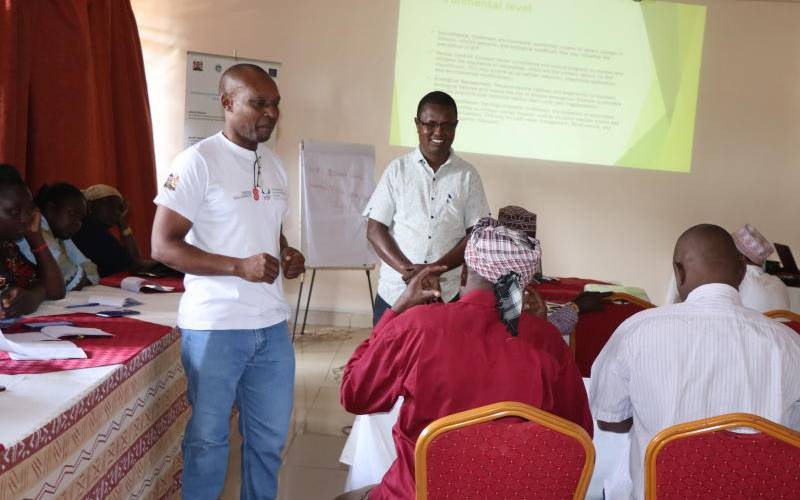The Kenya Veterinary Board (KVB) has urged counties to allocate more money to fight Rift Valley Fever (RFV) in Wajir, Tana River, Garissa and Isiolo counties.
According to Dr Christopher Wanga, KVB chairman, although the recent outbreak in these counties is now under control, more funds are needed to fight the disease.
“KVB has directed all veterinary technicians and team to quarantine movement of animals affected by the disease as a way of limiting the spread of the disease as this is the only way to ensure it does not spread to other parts of the country,” said Dr Wanga.
KVB, he said, has a limited budget which cannot sustainably support the fight against the disease adding that the board looks forward to working closely with counties to ensure that farmers have access to vaccines.
KVB plans to set up regional offices in Nyeri, Garissa, Nakuru, Kakamega and Mombasa in efforts to make the board more accessible to farmers.
Outbreaks of Rift Valley Fever are not uncommon in Kenya. The last documented outbreak occurred from November 2014 through January 2015 in north-eastern Kenya; in 2006, a large outbreak killed more than 150 people.
Rift Valley Fever is a mosquito-borne viral zoonosis that primarily affects animals but also has the capacity to infect humans. The majority of human infections result from direct or indirect contact with the blood or organs of infected animals. Herders, farmers, slaughterhouse workers and veterinarians have an increased risk of infection. Awareness of the risk factors of Rift Valley fever infection and measures to prevent mosquito bites is the only way to reduce human infection and deaths.
According to the World Health Organisation (WHO), outbreaks of RVF in animals can be prevented by a sustained programme of animal vaccination. Both modified live attenuated virus and inactivated virus vaccines have been developed for veterinary use.
Only 1 dose of the live vaccine is required to provide long-term immunity but this vaccine may result in spontaneous abortion if given to pregnant animals. The inactivated virus vaccine does not have this side effect, but multiple doses are required in order to provide protection which may prove problematic in endemic areas.
Animal immunisation must be implemented prior to an outbreak if an epizootic is to be prevented. Once an outbreak has occurred animal vaccination should NOT be implemented because there is a high risk of intensifying the outbreak.
As outbreaks of RVF in animals precede human cases, the establishment of an active animal health surveillance system to detect new cases is essential in providing early warning for veterinary and human public health authorities.
[Rading Biko:[email protected]]
 The Standard Group Plc is a
multi-media organization with investments in media platforms spanning newspaper
print operations, television, radio broadcasting, digital and online services. The
Standard Group is recognized as a leading multi-media house in Kenya with a key
influence in matters of national and international interest.
The Standard Group Plc is a
multi-media organization with investments in media platforms spanning newspaper
print operations, television, radio broadcasting, digital and online services. The
Standard Group is recognized as a leading multi-media house in Kenya with a key
influence in matters of national and international interest.
 The Standard Group Plc is a
multi-media organization with investments in media platforms spanning newspaper
print operations, television, radio broadcasting, digital and online services. The
Standard Group is recognized as a leading multi-media house in Kenya with a key
influence in matters of national and international interest.
The Standard Group Plc is a
multi-media organization with investments in media platforms spanning newspaper
print operations, television, radio broadcasting, digital and online services. The
Standard Group is recognized as a leading multi-media house in Kenya with a key
influence in matters of national and international interest.








